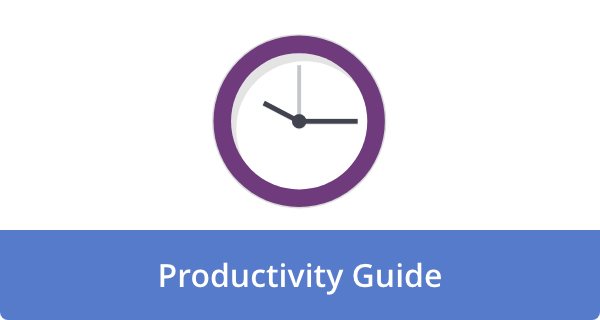

In any competitive environment, teams that stay productive, focused, and ahead of deadlines are the ones that thrive. Whether you’re part of a startup, a large organization, or a remote team, the ability to manage time effectively can make or break your team.
Burnout is a problem. Missing critical deadlines is a problem. To achieve your goals while avoiding these issues, your team should rely on effective time management techniques.
Let’s take a look at the eight best time management strategies that top-performing teams use to stay progressive and in-tune.
1. Set Clear, Specific Goals
The first step in effective time management is knowing exactly what you’re working toward. If the end goal is ambiguous, then you can’t logically distinguish between time well spent and time not well spent.
Teams that excel know how to break down their larger objectives into clear, specific goals. This isn’t just about making a to-do list but setting clear expectations that are measurable and time-bound.
Start with the SMART framework to set goals. This means your goals ought to be Specific, Measurable, Achievable, Relevant, and Time-bound.
A vague goal like “finish the project” doesn’t provide your team with any direction. A more effective goal would be to “complete the market research for the project by Friday at 3 PM,” which is concrete and actionable (It sounds simple, but you’d be surprised at how many teams still miss the clarity step—don’t be that team.).
With tools like Calendar, teams can schedule milestones directly into their calendars. Having clear deadlines helps ensure that every team member knows what to do and when.
2. Prioritize Tasks Using the Eisenhower Matrix
Once your team knows what to accomplish, it’s time to prioritize. High-performing teams avoid wasting time on non-essential tasks. Your team can also do the same using the Eisenhower Matrix.
What’s the Eisenhower Matrix?
It offers an elegant solution for determining which tasks are most important and urgent.
The matrix is divided into four core areas:
- Urgent and important: These tasks should be done immediately.
- Not urgent, but important: These tasks should be scheduled for later.
- Urgent, but not important: These tasks can be assigned to someone else.
- Neither urgent nor important: These tasks should be avoided or eliminated.
Using the Eisenhower Matrix, teams focus on what actually drives results and delegate or avoid tasks that don’t align with their goals.
3. Use Time Blocking to Eliminate Multitasking
Multitasking may seem efficient, but it slows down productivity. High-performing teams know that focusing on one task at a time is more effective. Time blocking is a technique that supports this idea by dedicating specific blocks of time to specific tasks or activities.
For example, a team member might block off 9:00 AM to 11:00 AM for project planning, 11:30 AM to 1:00 PM for client calls, and 2:00 PM to 4:00 PM for creative brainstorming. During these blocks, no other tasks should be interrupted, and the team should focus solely on what is scheduled.
Many scheduling tools, like Calendar, help teams visualize their time blocks and stay on track. Time blocking also helps avoid the distractions that come from switching between tasks and provides a more transparent structure to the workday.
4. Conduct Regular Check-ins and Stand-up Meetings
Teams that want to win know the importance of staying aligned. Regular check-ins and stand-up meetings are crucial for maintaining alignment among team members.
A stand-up meeting is a brief, daily, or weekly gathering where team members discuss what they accomplished the previous day, what they plan to do next, and any blockers they may be facing. These meetings should be brief, ideally lasting under 15 minutes, to ensure that time isn’t wasted.
These check-ins allow teams to identify potential issues early and adjust priorities as needed. They also provide an opportunity for team members to stay motivated and celebrate successes together. (You know, the type of meetings where everyone’s talking and no one is checking their phone. The dream!)
5. Use Task Management Software
To stay organized and ensure no task slips through the cracks, many high-performing teams use task management software. Tools like Asana, ClickUp, Trello, or Monday.com help teams track their projects and collaborate in real-time.
These tools give visibility to team members, so they can see who is working on what, what’s du,e and if tasks are on schedule.
Task management software centralizes communication so no one has to spend time searching through emails or messages for the latest updates. When used correctly, these tools streamline communication and make task delegation more manageable.
6. Time Tracking for Accountability
Understanding how time is spent is crucial for high-performing teams. Without proper time tracking, tasks can easily take longer than expected, or team members may get sidetracked.
Time-tracking tools help teams stay accountable by providing insights into where time is being spent. This can help teams identify bottlenecks or areas where they may be spending too much time on non-essential tasks.
Reviewing time logs can help teams allocate their resources more effectively and adjust their strategies to maximize productivity.
If a project manager notices that certain tasks consistently take longer than expected, they can identify potential inefficiencies and implement necessary improvements. Think of it as the digital version of a team-wide whiteboard, but without the markers running out of ink.
7. Automate Routine Tasks
Another key time management technique for high-performing teams is automation. Teams often waste time on repetitive, routine tasks that could easily be automated. From scheduling meetings to sending follow-up emails or organizing files, automating these tasks can free up valuable time for more strategic work.
Tools like Zapier or IFTTT help automate workflows by connecting different apps and services. For instance, teams can automate tasks like syncing calendar events across platforms, automatically generating reports, or setting reminders for important deadlines.
On top of saving a ton of time, automation also shrinks the risk of human error, so that important tasks don’t get overlooked.
8. Regularly Review and Reflect on Your Time Management Practices
Time management isn’t a set-it-and-forget-it process. High-performing teams regularly review and reflect on their time management practices to ensure they’re staying effective and aligned with their goals.
Encourage your team to take time at the end of each week or month to review what worked well and what didn’t. This reflection enables teams to refine their strategies, streamline processes, and enhance their productivity for the future.
It’s important to celebrate wins and recognize achievements. Acknowledging progress is a double-whammy. It both raises morale and reinforces the value of effective time management.
How Will Your Team Tighten Up Its Time Management?
The best time management techniques for high-performing teams involve a combination of clear goal setting and utilizing the right tools to stay organized. Leveraging strategies like time blocking, regular check-ins, and automation helps teams work smarter and more efficiently.
If you follow these eight approaches, your team will inevitably avoid distractions more easily and have a smoother time moving toward their goals. With a culture of time awareness and balance, teams not only become more productive but also more sustainable in the long run.
Want to learn more about effective productivity and time management techniques? Check out other helpful Calendar articles on how to boost your team’s productivity, the best team collaboration tools, and time-saving strategies.
Featured image Credit: Photo by RDNE Stock project; Pexels











Howie Jones
My name is Howie and I'm a Customer Success Manager at Calendar. I like to ensure our customers get the best experience using our product. If you have questions email me howie at calendar.com